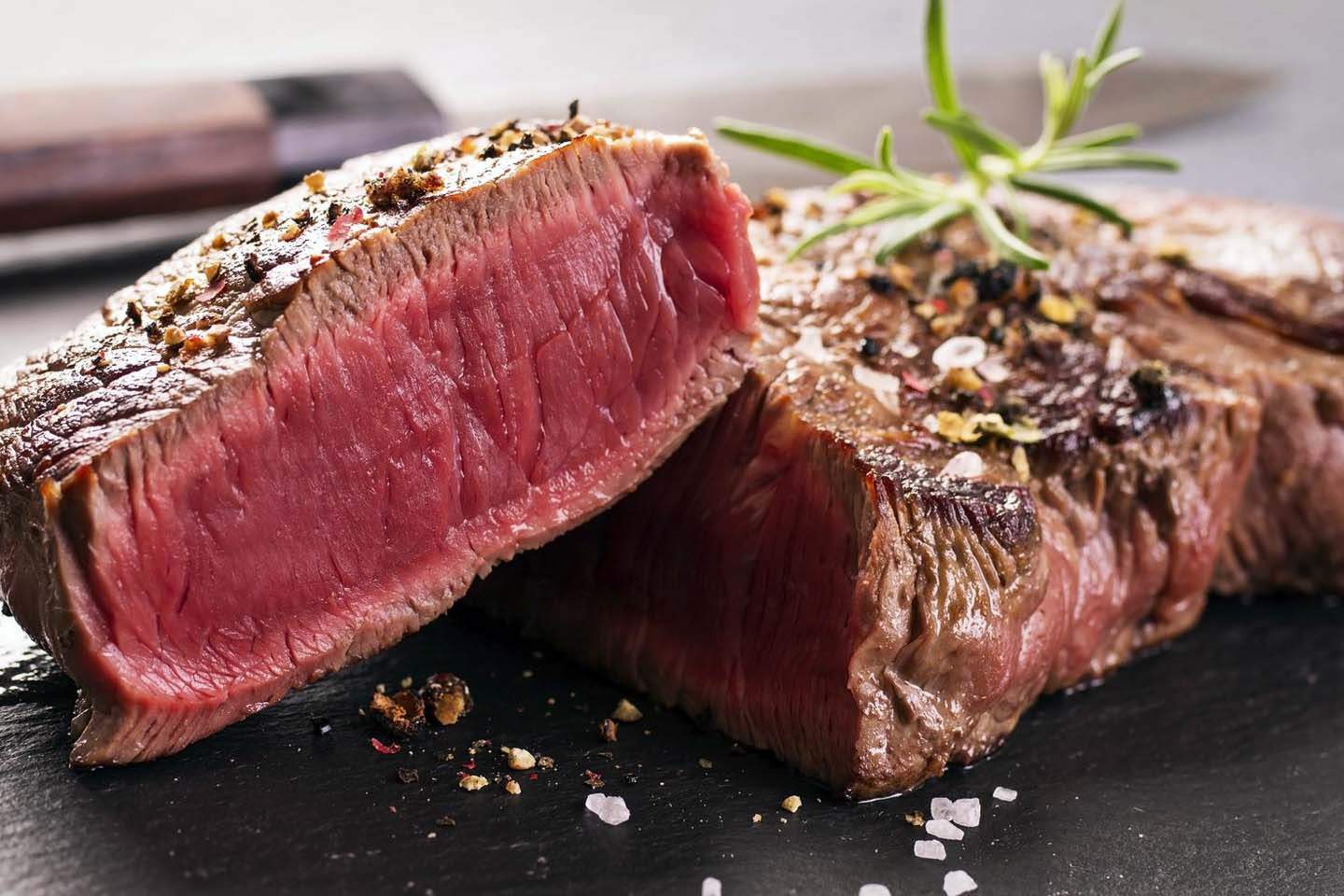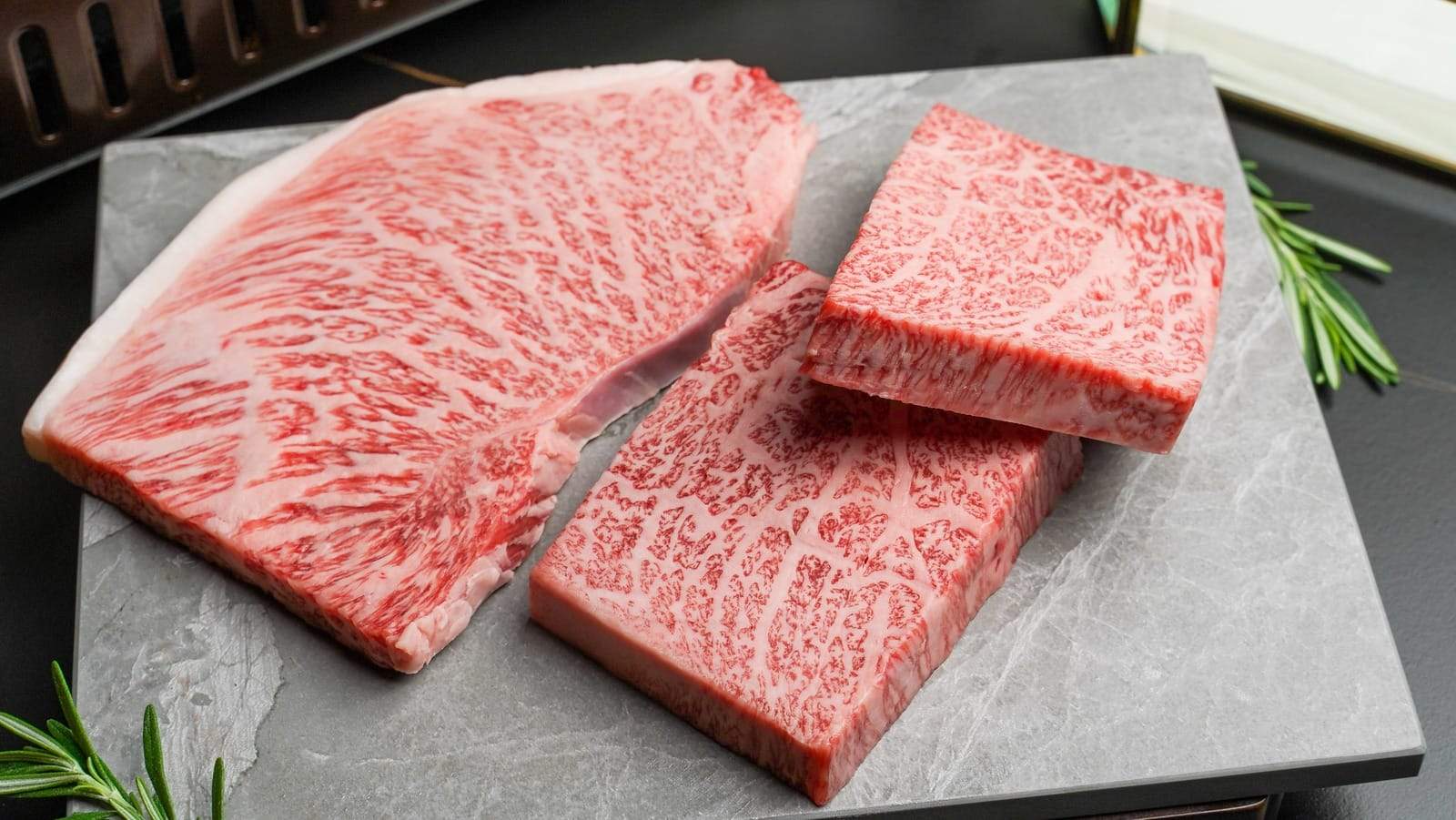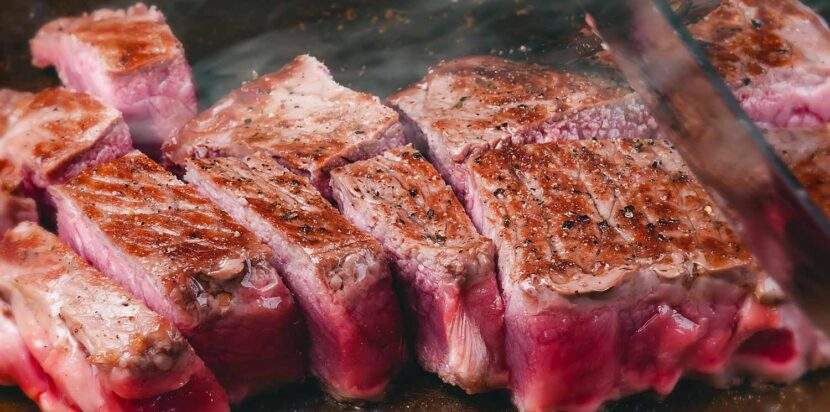Wagyu Steak
Why is it the Best Wagyu Steaks You’ll Ever Eat
Wagyu beef is a specific type of beef that comes from Wagyu cattle. The term “Wagyu” literally translates to “Japanese cow” (wa meaning Japanese and gyu meaning cow). While many think Wagyu steak is a single breed, it actually encompasses four distinct breeds: Japanese Black, Japanese Brown, Japanese Polled, and Japanese Shorthorn, all native to Japan.
Wagyu cattle are raised under strict conditions with a specialized feeding schedule that includes rice straw, whole crop silage, and concentrate. This meticulous care promotes the development of their renowned marbling, making the meat incredibly tender and flavorful.
The extensive care, specific diet, and prolonged feeding period (up to 600 days) contribute to Wagyu beef’s high cost and exceptional quality. The result is the most tender, juicy, and flavorful steak you’ve ever tasted.
Here’s more about the origins of Wagyu, the different types you might encounter, why it’s so expensive, and how you can cook it.
What is Wagyu?
Wagyu steaks beef is a specific type of meat produced by a breed of Japanese cattle (makes sense, since Wagyu literally translates to “Japanese cow.”) These beef cattle are highly revered and kept under very specific conditions and may even be guarded — all because the quality and flavor of this coveted beef are, quite frankly, out of this world delicious.
Beef marbling is important no matter where the cow comes from, but Wagyu has a reputation for the most incredible intramuscular fat that, in some cases, is so prevalent it turns the meat a light pink color.
As a result of all that well-dispersed fat, Wagyu has a rich, buttery, high-umami flavor that’s still distinctly beefy and a melt-in-your-mouth texture that’s hard to beat.
What are the different types of Wagyu?
There are different types of Wagyu beef and understanding those differences can make you better prepared for shopping, cooking, and winning at trivia games (it’s always good to cover your bases!).
Japanese Wagyu Beef
When people ask, “Where does Wagyu steak come from?”, people commonly think of Japan, but Wagyu beef can only be categorized as Japanese Wagyu if the meat comes from one of four Japanese-born breeds, and those cattle must be born and raised in Japan. It’s possible to find Wagyu crossbreeds (and maybe in cloned cows) in other countries, but this is not regarded as “true Japanese Wagyu.” How can anybody be sure? Cows in Japan must meet DNA standards set by the Japanese government to be labeled as Wagyu.
Japanese Wagyu beef cattle are raised in VIP conditions and under very specific guidelines. For instance, the cows must be fed on a strict diet of high-quality feed — barley, rice bran, wheat bran, etc. — for at least 600 days. They’re also kept in clean areas with lots of access to outdoor spaces and there’s lots of attention paid to how the cows feel — stress can affect the quality of the meat.
You can buy Japanese Wagyu in various forms, including a filet, burgers, or a NY strip steak.
American Wagyu Beef
American Wagyu is actually the result of crossbreeding highly regarded Black Angus cattle with legendary Japanese cows. Some of the guidelines are the same but standards tend to be a little lower in the U.S. versus what you’ll see in Japan; for starters, American Wagyu are raised on a diet of corn and wheat for 400+ days instead of 600+.
Those differences in guidelines affect the taste and texture of the meat, too. American Wagyu is still an incredibly popular delicacy, and for good reason, but the crossbreeding results in a little less fat and marbling and a more classic American beef taste — still juicy and delectable, but definitely more robust.

Australian Wagyu Beef
Like American Wagyu, Australian Wagyu is related to Japanese Wagyu steaks but not an exact copy. The cattle share a genetic link with those coveted Japanese breeds thanks in part to a DNA sample that traveled to Australia around 1990. Actual Japanese cattle arrived down under about seven years later. Today, Australian Wagyu is often a cross between Wagyu and another breed, such as prized Mitchell cattle. Those cows are fed on native grasses and finished on a proprietary feed mix to create a win-win combination of Wagyu characteristics and Australian excellence.
Those lucky enough to taste Australian Wagyu have experienced its tender texture and mild yet highly memorable flavor. Though the meat isn’t quite as marbled as the “original” Wagyu, it’s still a stellar option.
Experience for yourself with Wagyu Packer Brisket, a cut that epitomizes the special nature of Australian Wagyu and is perfect for smoking, braising, or tucked into your slow cooker.
Pro tip: Australian Wagyu has its own dedicated grading system which ranks the meat’s marbling on a scale from 0 to 9, which a 9 assigned to beef with the most incredible fat distribution and presence.
Kobe Beef
Kobe beef is Japanese Wagyu that comes from Hyogo prefecture. Kobe beef relies on a specific type of Japanese Black Wagyu breed called Tajima that was isolated away from other breeds for hundreds if not thousands of years, resulting in purebred, uninterrupted bloodlines and a flavor profile that is believed to be utterly one of a kind. These cows are all farm fed in Hyogo and processed nearby. Interestingly, the fat in Kobe beef also has a lower melting point than the fat in other types of non-Wagyu beef, meaning you can cook the beef less and still reap the rewards that come with basting beef in its own marbling.
Why is Wagyu Beef So Expensive?
Wagyu beef is renowned for its exceptional quality and unique flavor, making it a prized choice among steak connoisseurs. But why is it so expensive?
Wagyu steak is worth trying at least once in your life, perfect for special occasions. The high price tag is due to several factors. Japanese Wagyu, and its American counterpart, come from a rarer breed of cattle, raised under strict conditions. This involves significant labor to ensure proper cultivation, focusing on quality over quantity. Adult Wagyu cattle can sell for as much as $30,000, justifying the high per-plate cost at your local steakhouse.
While Wagyu is a premium choice, USDA Prime beef is a strong alternative. Prime is the highest rating from the USDA, reflecting excellent marbling, taste, and texture. It offers an excellent dining experience without reaching the luxury level of quality Wagyu.
The Difference Between Wagyu Beef and Regular Beef
Due to its exceptional marbling, tenderness, and flavor, Wagyu steaks stands out from “regular beef”, or beef that typically comes from common cattle breeds like Angus, Hereford, and Holstein. Originating from specific Japanese cattle breeds, Wagyu is raised under strict conditions that emphasize quality and care, resulting in a higher fat content that gives the meat a melt-in-your-mouth texture and rich taste, whereas “regular cattle” is raised primarily for their meat, which has a balanced fat content and firmer texture. While regular beef, graded as USDA Prime, Choice, or Select, can still be delicious and versatile, it doesn’t offer the same luxurious eating experience as Wagyu.

How is Wagyu beef graded?
Wagyu beef is graded using a system completely separate from the USDA metric used in the United States. Wagyu grading uses a combination of letters and numbers; letter grades reflect yield and number grades reflect quality.
For letters/yield, ratings are based on the amount of usable meat a cow yields:
- Grade A: Above standard
- Grade B: Standard
- Grade C: Below standard
For numbers/quality, beef is evaluated on several criteria including the presence of marbling, the texture/firmness of the meat, how bright and colorful the beef is, and the overall appearance of the existing fat. Ratings go as follows:
- 5: Excellent
- 4: Good
- 3: Average
- 2: Below average
- 1: Poor
So A5 Wagyu, which would be from a cow with above-average yield and excellent quality, is the highest graded Wagyu you can ever find. Or is it? There’s another grading system at play and this may be even more useful for consumers. There is an additional grading factor called Beef Marble Score, or BMS. Breeders and beef retailers use BMS to showcase the quality of the marbling, which translates into how impressive an experience a diner can ultimately have.
BMS grading looks like this:
- 5: Excellent 8-12
- 4: Good 5-7
- 3: Average 3-4
- 2: Below average 2
- 1: Poor 1
So the real top-of-the-line, best-you-can-ever-eat Wagyu would be rated A5-12 for best possible yield, highest quality, best possible marbling. Yum.
What is the best way to cook Wagyu beef?
The best way to cook Wagyu beef depends on personal taste and which cut of meat you choose, but generally speaking, Wagyu needs to be cooked enough to melt all the marbling but not so much that you’re cooking out the subtle flavors and destroying the beef’s innate texture.
Wagyu can be cooked all the ways you usually cook beef, including:
- Grilled
- Pan-seared
- Cooked sous vide
- Ground and formed into a hamburger
Allen Brothers carries a wide range of beef cuts and types, including everything from USDA prime ribeyes to Wagyu cocktail franks. Shop our catalog today and bring home the best in artisanal meat.
 Email: crab@shakingcrabquincy.com
Email: crab@shakingcrabquincy.com 

